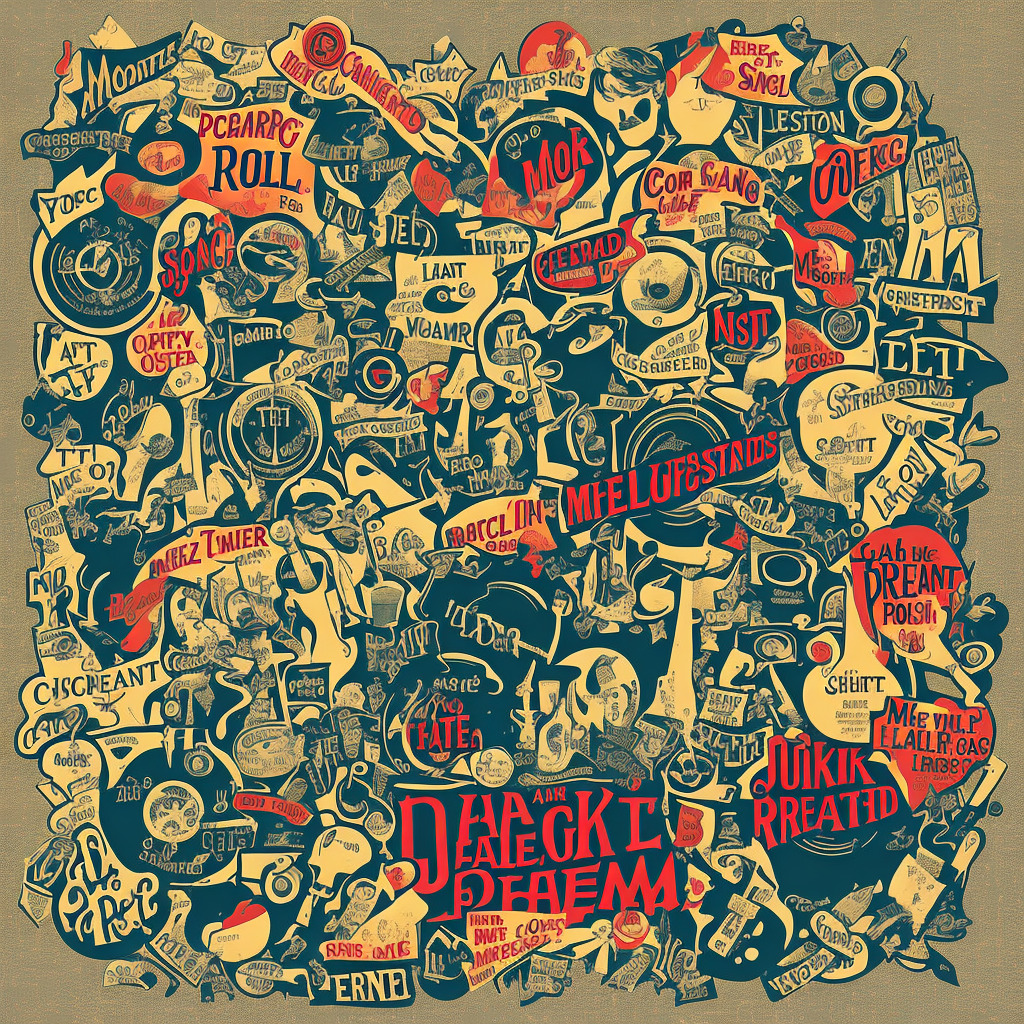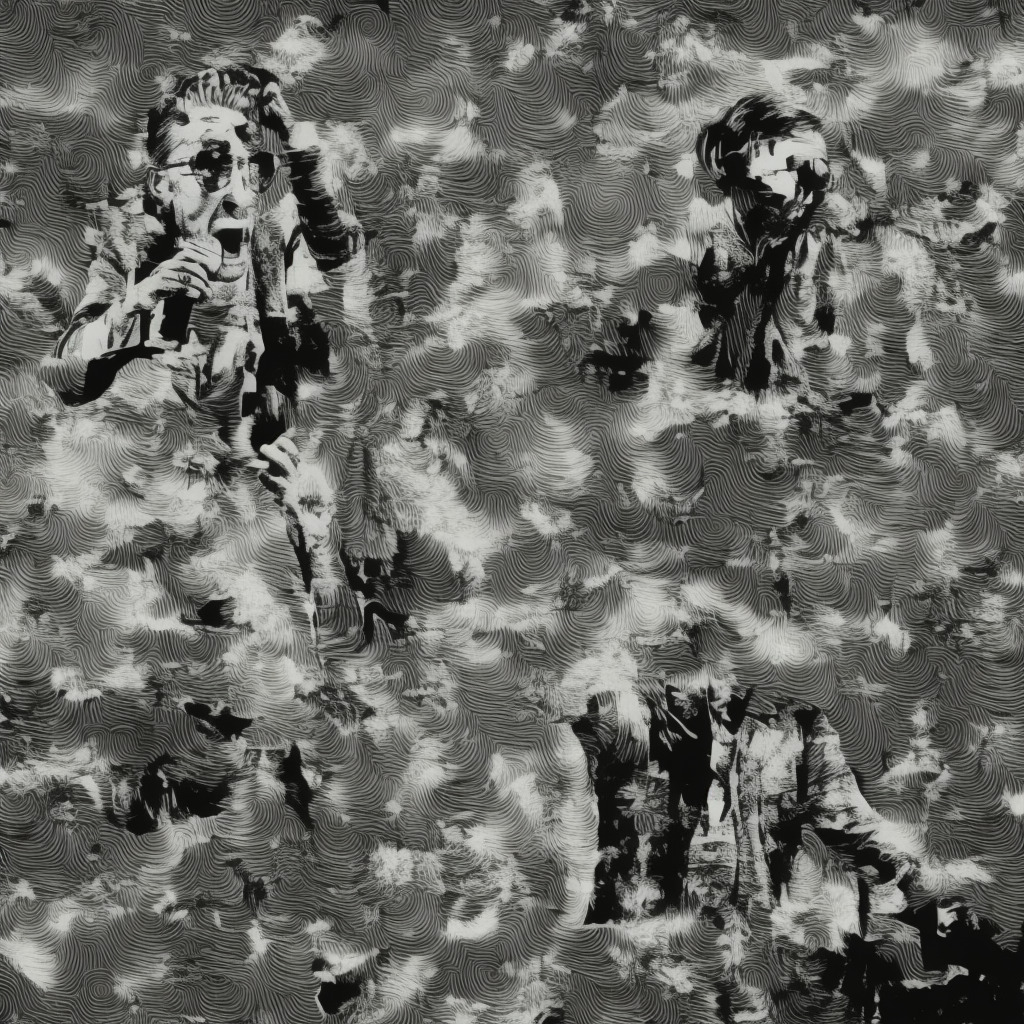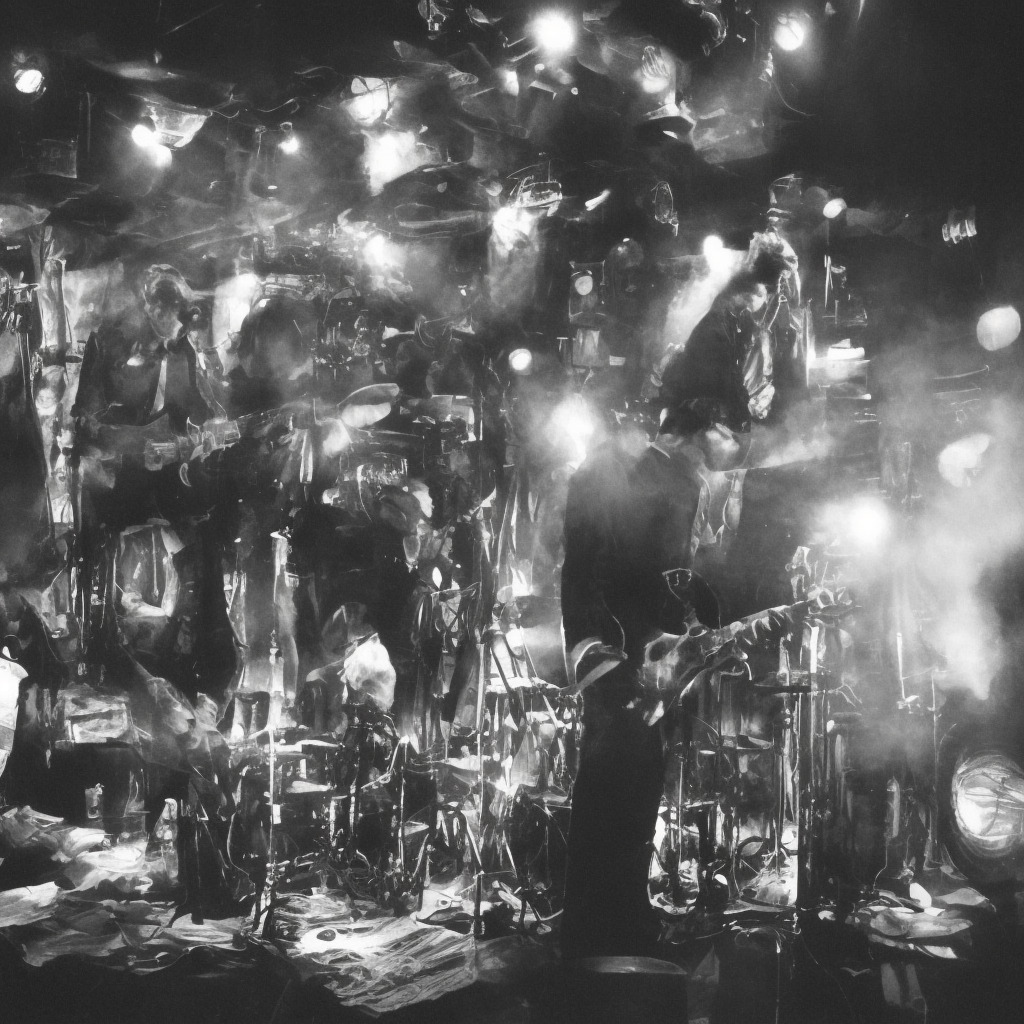? Did you know #Chumbawamba’s ’97 hit #Tubthumping is all about resilience? ? These anarchists really knew how to make us dance! ?? Fun fact: It’s been featured in over 20 films & TV shows! ?? #MusicTrivia #ThrowbackThursday Read about it: tinyurl.com/36jdehz7
The Unstoppable Rise and Legacy of Chumbawamba
From anarchic roots to ’90s nostalgia, Chumbawamba’s rise to fame and unwavering commitment to activism solidify their lasting impact on music and social change.

Chumbawamba, an anarchist punk collective formed in 1982, is best known for their 1997 smash hit “Tubthumping.” The song’s infectious refrain – “I get knocked down, but I get up again, you’re never gonna keep me down” – became an anthem for resilience and a staple at sporting events and parties worldwide. But let’s not forget that this band has more to offer than just this one-hit wonder.
The British band’s initial lineup consisted of Danbert Nobacon, Lou Watts, Boff Whalley, Midge, Dunstan Bruce, and Harry Hammer. While the group had seen some success in the underground music scene with their politically charged punk tunes and anarchist activism, it wasn’t until they signed to EMI Records that they became household names.
“Tubthumping,” the lead single off their seventh album, “Tubthumper,” skyrocketed Chumbawamba to fame, reaching number two on the UK singles chart and number six on the US Billboard Hot 100. However, this success was met with controversy. Some longtime fans accused the band of “selling out” to a major label, given their previous critiques of the music industry and activism against capitalism.
Despite the backlash, Chumbawamba continued to use their platform to promote their political beliefs. They notably donated the proceeds of their “Top of the Pops” appearance to striking dockworkers and stirred up more controversy at the 1998 BRIT Awards, where they protested against the Labour government’s treatment of striking dockworkers by soaking then-Deputy Prime Minister John Prescott with a bucket of ice water.
Throughout their career, Chumbawamba’s lineup underwent several changes, but the core members remained committed to their anarchic ideals. The band’s music evolved as well, encompassing various genres like punk, pop, folk, and experimental. While “Tubthumping” is arguably their most famous song, Chumbawamba has a vast discography with 14 studio albums to their name. Although they disbanded in 2012, their influence can still be felt in today’s punk and activist music scenes.
While Chumbawamba may never escape being labeled as “one-hit wonders,” it’s essential to remember the band’s roots as political agitators and their refusal to conform to industry expectations. “Tubthumping” may be the soundtrack to many people’s late ’90s nostalgia, but Chumbawamba’s true legacy lies in their unwavering commitment to social and political change. So, whether you love them or loathe them, there’s no denying that Chumbawamba has made an indelible mark on both music and activism.
Hitting the Charts: A Look at the Numbers
“Tubthumping: The Anthem that Conquered the World – Chart Success, Platinum Status, and Timeless Impact.”

When “Tubthumping” was released on August 11, 1997, it didn’t take long for the song to climb up the charts and make a significant impact in the music world. The track first entered the UK Singles Chart on August 24, 1997, at number 9. It quickly gained momentum and reached its peak position at number 2 on September 14, 1997, where it remained for two weeks. This was undoubtedly an impressive achievement for Chumbawamba.
The song’s success wasn’t limited to the UK. “Tubthumping” also struck a chord with audiences across the globe. It reached the Top 10 in several countries, including Australia, where it peaked at number 1 and achieved Platinum status. In the United States, it climbed to number 6 on the Billboard Hot 100 chart and was even more successful on the Modern Rock Tracks chart, where it reached number 1. The song also made an appearance in the Top 10 of the charts in Canada, Ireland, New Zealand, and Sweden.
When it comes to chart trivia, “Tubthumping” holds a unique position as Chumbawamba’s most commercially successful single. The song spent a total of 11 weeks in the Top 10 of the UK Singles Chart and 15 weeks in the US Billboard Hot 100 chart. This level of success was not replicated by the band in any of their subsequent releases.
In addition to its chart success, “Tubthumping” received several award nominations. It was nominated for the 1998 Brit Award for Best British Single, although it did not take home the prize. At the 1998 MTV Video Music Awards, the song’s music video was nominated in the Best New Artist category.
Overall, the numbers speak for themselves: “Tubthumping” was undeniably a chart-topping phenomenon that resonated with audiences worldwide. Its catchy chorus and unique blend of genres helped it achieve a level of success that cemented its place in music history.
Unraveling the Heart and Soul of Tubthumping
We’ll be singing
When we’re winning
We’ll be singing
I get knocked down
But I get up again
You’re never gonna keep me down
Pissing the night away
Pissing the night away
He drinks a whiskey drink
He drinks a vodka drink
He drinks a lager drink
He drinks a cider drink
He sings the songs that remind him of the good times
He sings the songs that remind him of the better times
“Oh, Danny Boy, Danny Boy, Danny Boy”
I get knocked down
But I get up again
You’re never gonna keep me down
Pissing the night away
Pissing the night away
He drinks a whiskey drink
He drinks a vodka drink
He drinks a lager drink
He drinks a cider drink
He sings the songs that remind him of the good times
He sings the songs that remind him of the better times
“Don’t cry for me, next door neighbor”
I get knocked down
But I get up again
You’re never gonna keep me down
We’ll be singing
When we’re winning
We’ll be singing
At the crux of the lyrics of “Tubthumping” lies an anthem of resilience and celebration in the face of adversity. The recurring line, “I get knocked down, but I get up again, you’re never gonna keep me down,” poignantly captures this sentiment. Released in 1997, the song became an instant hit and resonated with listeners worldwide, who found solace and strength in its message.
The time of the song’s release was marked by political and social unrest both in the UK and around the globe. Chumbawamba, a band with anarcho-punk roots, seized this opportunity to create a song that could be interpreted as a rallying cry for those facing difficulties, be it personal or societal. The song’s lyrics touch upon themes of solidarity and camaraderie, as the protagonist indulges in various alcoholic drinks and sings songs that remind him of better times.
However, it is essential to recognize that “Tubthumping” is not simply about drowning one’s sorrows in alcohol; it’s an anthem for bouncing back and finding resilience in the most trying times. The phrase “pissing the night away” alludes to the temporary nature of escape through alcohol, acknowledging that the true strength lies in facing life’s obstacles head-on and refusing to be kept down.
As it pertains to the era, “Tubthumping” serves as a snapshot of the late 90s, when political turmoil and social change seemed to be constant. The song continues to inspire and uplift, transcending time and resonating with people of all walks of life who are determined to overcome their struggles and come out victorious.
The Visual Riot of “Tubthumping”
Dive into the anarchic, 90s visual frenzy of Chumbawamba’s “Tubthumping,” where resilience roars through chaotic cuts and subliminal messages.
The music video for Chumbawamba’s smash hit “Tubthumping” is a chaotic, energetic visual representation of the song’s message of resilience and perseverance. Released in 1997, the video was directed by the talented British filmmaker Simon Hilton, who was known for his work with various other bands like The Prodigy and The Verve.
The “Tubthumping” music video was produced on a modest budget, but it certainly didn’t shy away from making a strong visual impact. Shot mainly in black and white, with sporadic splashes of color, the video features the band members performing in a claustrophobic, dimly lit space, interspersed with scenes of people dancing and getting knocked down, only to get back up again. This visual representation perfectly complements the song’s lyrics, “I get knocked down, but I get up again, you’re never gonna keep me down.”
The artistic approach of the music video reflects the band’s anarchist and anti-establishment roots, with the members performing in their trademark anti-corporate attire. The video also includes a series of subliminal messages that flash on-screen for a split second – a subtle nod to the band’s political beliefs and a way of engaging viewers on a deeper level.
Furthermore, the video’s editing techniques are reminiscent of the 90s MTV-era, with rapid cuts and a frenetic pace that serves to heighten the infectious energy of the song. The overall effect is a visually stimulating, attention-grabbing piece of art that perfectly captures the essence of “Tubthumping” and the band’s persona.
Over the years, the music video for “Tubthumping” has garnered millions of views on YouTube and has inspired countless fan videos and tributes. Its enduring appeal can be attributed to the catchy melody, the powerful message of resilience, and the eye-catching visuals that have left an indelible mark on the minds of music lovers worldwide. Overall, the “Tubthumping” music video remains an iconic piece of 90s pop culture and a testament to the enduring legacy of Chumbawamba.
The Mastermind Behind Chumbawamba’s Catchy Hit
The composer of Chumbawamba’s iconic ’90s hit, “Tubthumping,” is an integral figure in the band’s success. Danbert Nobacon, along with Lou Watts and Boff Whalley, formed the collective in 1982 in Burnley, England. While “Tubthumping” remains Chumbawamba’s most well-known song, Nobacon’s creative prowess extends beyond this international sensation. The band’s 1997 album, “Tubthumper,” includes other noteworthy tracks such as “Amnesia” and “Drip, Drip, Drip,” which further exhibit Nobacon’s knack for crafting memorable tunes with a strong political message.
In addition to his work with Chumbawamba, Danbert Nobacon has a solo career and has released several albums, including “The Library Book of the World” (2007) and “Stardust to Darwinstuff” (2016). Despite the massive success of “Tubthumping,” Nobacon and the band remained committed to their anarchist roots and continued to address social and political issues in their music throughout their career.
Accolades, Appearances, and Alluring Adaptations
From chart-topping accolades to infectious TV soundtracks, “Tubthumping” remains a resilient anthem inspiring generations of alluring adaptations.

“Tubthumping” has undoubtedly made an indelible mark in the music world ever since its release back in 1997. This unforgettable hit has received several awards and accolades, solidifying its place as an anthem for resilience and camaraderie. Nominated for the Brit Award for Best British Single, it also climbed to the second spot on the UK Singles Chart and reached the top 10 in several countries, including the United States, Australia, and Canada. As if that wasn’t enough, “Tubthumping” bagged the prestigious Ivor Novello Award for Best Contemporary Song in 1998.
From movies to TV shows, “Tubthumping” has made its presence felt in the world of visual media as well. Its infectious beat and chorus can be heard in the soundtracks of several films, such as “The Parent Trap,” “The Man,” “Joe’s Apartment,” and “Air Bud: Golden Receiver.” As for television, the song has graced series like “The Simpsons,” “King of the Hill,” “Cold Case,” and “My Name Is Earl,” to name a few. For video game enthusiasts, the Chumbawamba hit made an appearance in the game “Rock Band Blitz,” enhancing the gameplay experience for fans of the song.
The success of “Tubthumping” has inspired several artists to put their own spin on the classic, resulting in various cover versions. Some noteworthy adaptations include They Might Be Giants’ rendition for their 2011 album “Join Us,” and the ska-infused take by the Danish band The Society of Invisibles for their 2011 album “The Snowball Effect.” The song has also been covered by the likes of Smash Mouth, Avail, and Jonathan Young, each delivering a unique interpretation that pays tribute to the original.
Throughout the years, “Tubthumping” has cemented its reputation as an iconic song, weaving its way through popular culture and becoming a mainstay in the annals of music history. Whether it’s through awards and accolades, movie and TV appearances, or captivating cover versions, the influence of “Tubthumping” continues to be felt by fans and musicians alike.
Breaking Down the Musical Elements
Diving into the musical structure of this infectious anthem, “Tubthumping” is written in the key of E major, a key quite common in popular music due to its bright and uplifting tonality. The song kicks off with a catchy four-chord progression that forms the foundation of the entire track, cycling through E, B, C# minor, and A major chords. This progression creates a sense of optimism and drive, perfectly complementing the song’s defiant lyrics.
Tempo-wise, “Tubthumping” clocks in at around 104 beats per minute (BPM), striking a sweet spot between a moderate and upbeat pace. The tempo lends itself well to both casual listening and more energetic settings, such as parties or workout playlists. The song’s groove is driven by a combination of a four-on-the-floor kick drum pattern and a syncopated snare and hi-hat rhythm. This rhythmic foundation keeps the listener engaged and moving throughout the track.
The arrangement of “Tubthumping” features a blend of electronic and acoustic instrumentation, giving the song its unique sonic palette. The verses are characterized by a pulsing synth bassline and sparse piano chords, while the choruses explode with layers of electric guitar, brass, and an anthemic group vocal. This contrast between the verses and choruses provides a dynamic listening experience, keeping the audience hooked from start to finish.
One of the more interesting aspects of “Tubthumping” is the inclusion of two distinct vocal sections: a male-sung verse and a female-sung pre-chorus. The verse’s gritty, almost spoken-word delivery is juxtaposed against the melodic, soaring pre-chorus, offering a refreshing sonic contrast. This variety in vocal styles adds to the song’s overall appeal, further contributing to its enduring popularity.
In summary, the musical structure of “Tubthumping” can be attributed to its clever combination of a catchy chord progression, an engaging tempo, dynamic arrangement, and diverse vocal performances. These elements come together seamlessly to create a timeless hit that continues to resonate with listeners even decades after its release.







